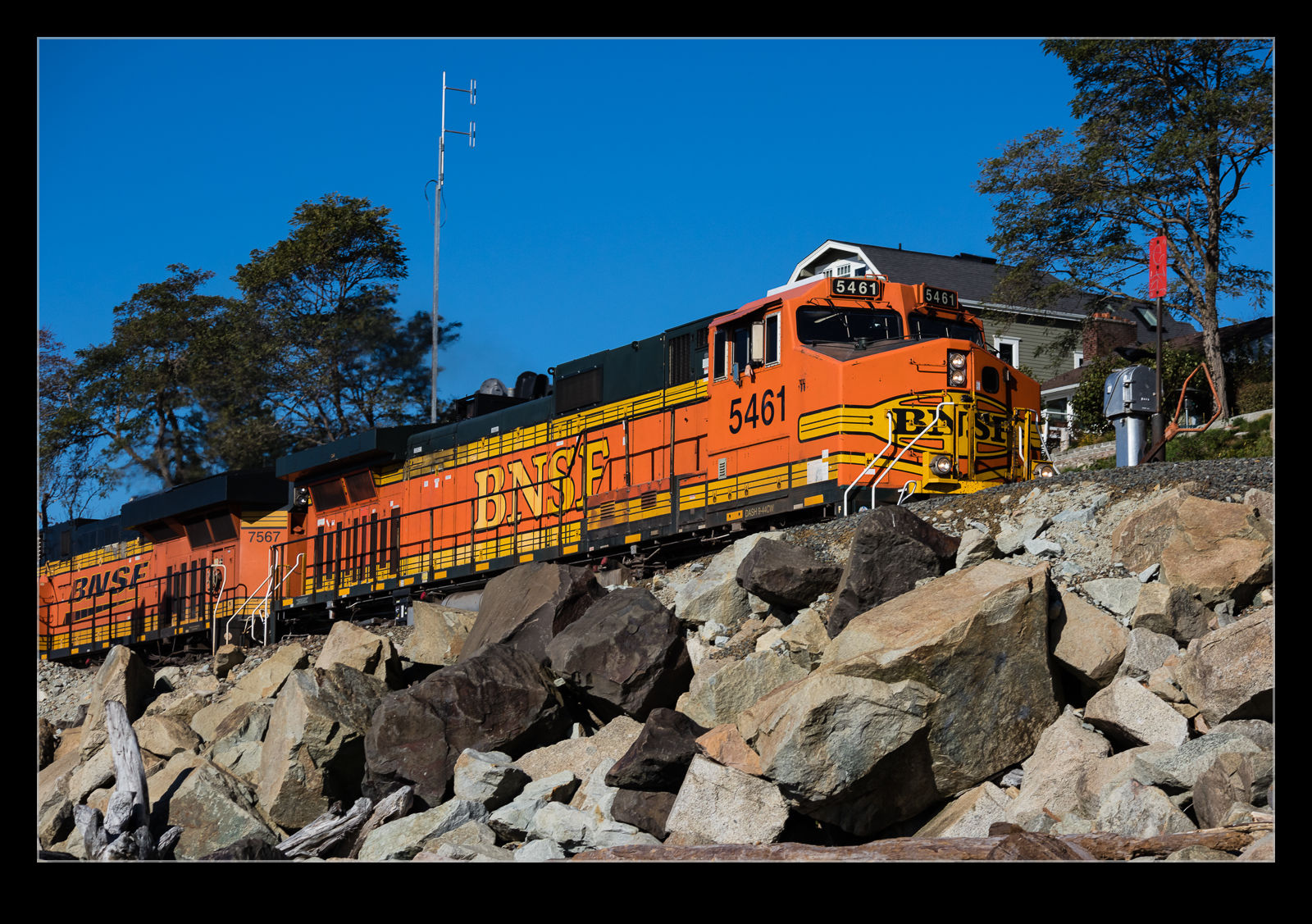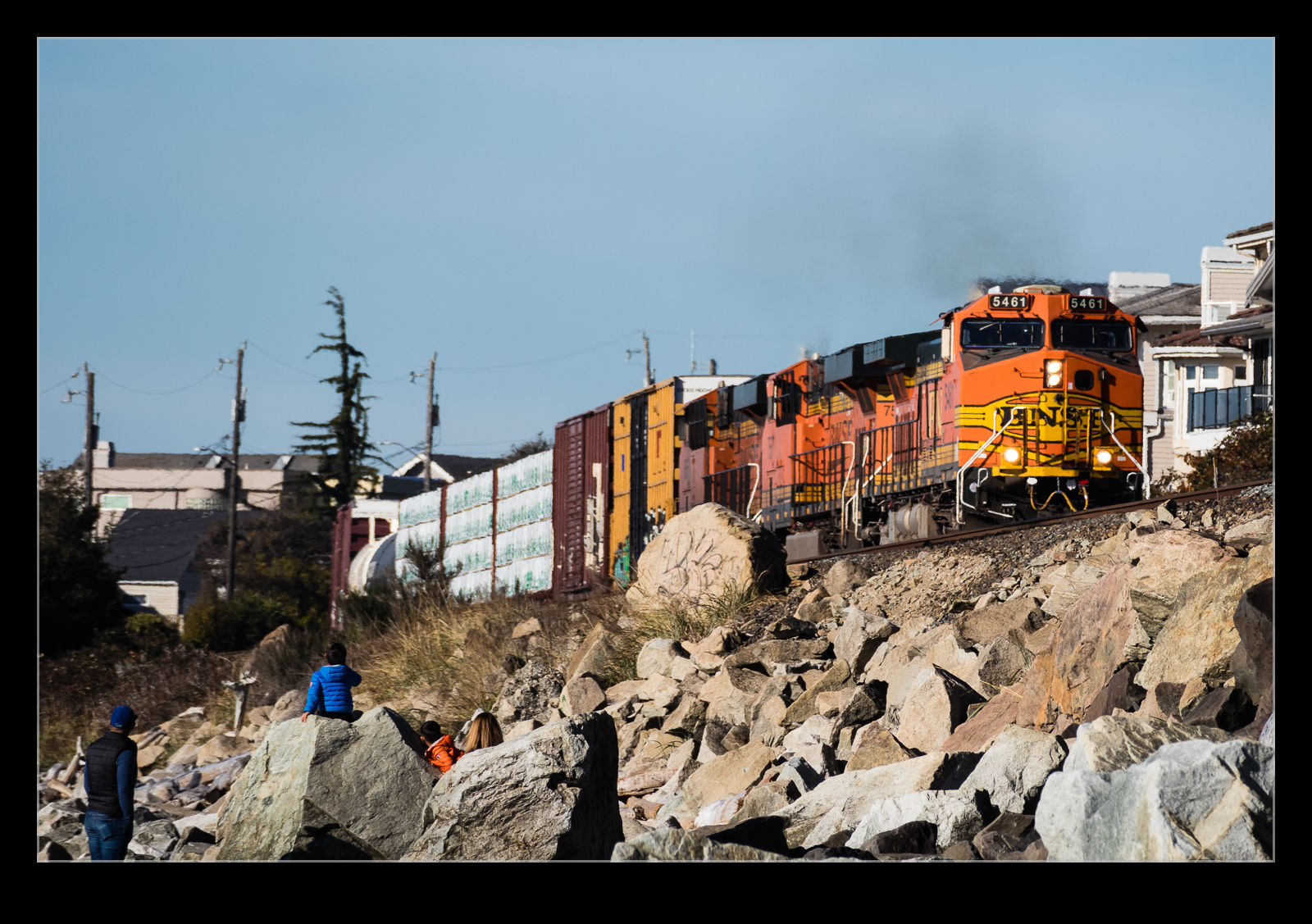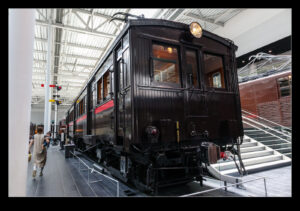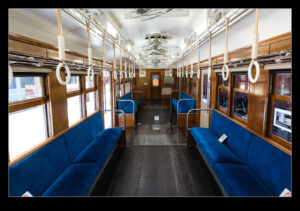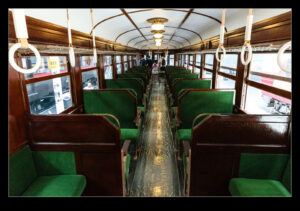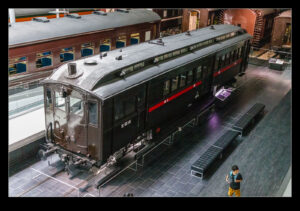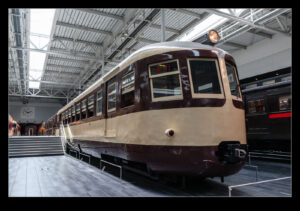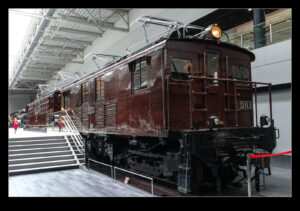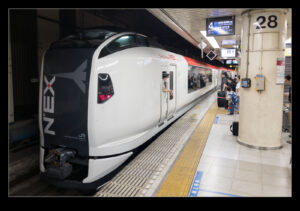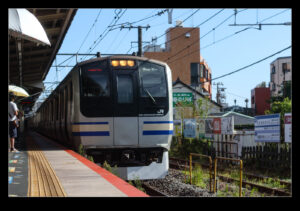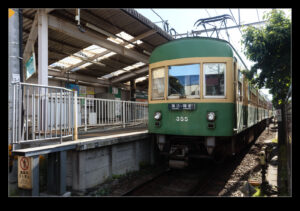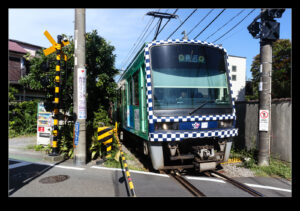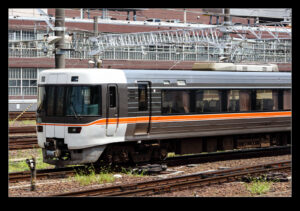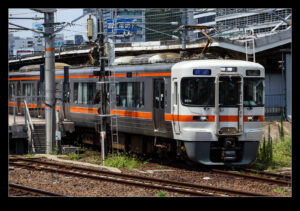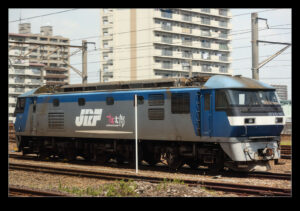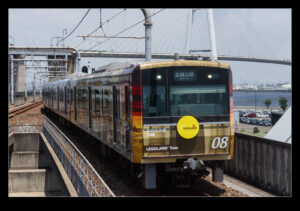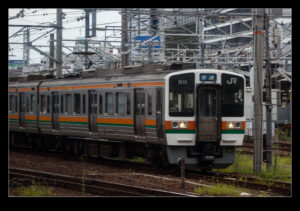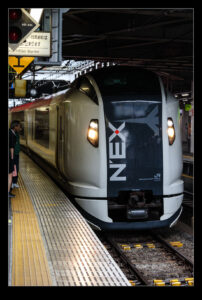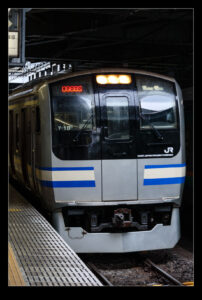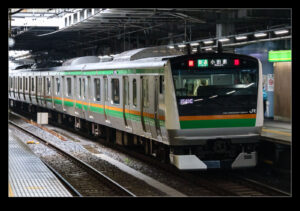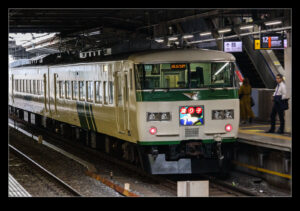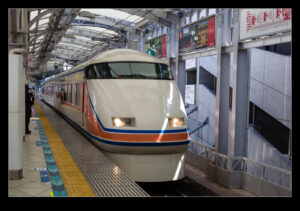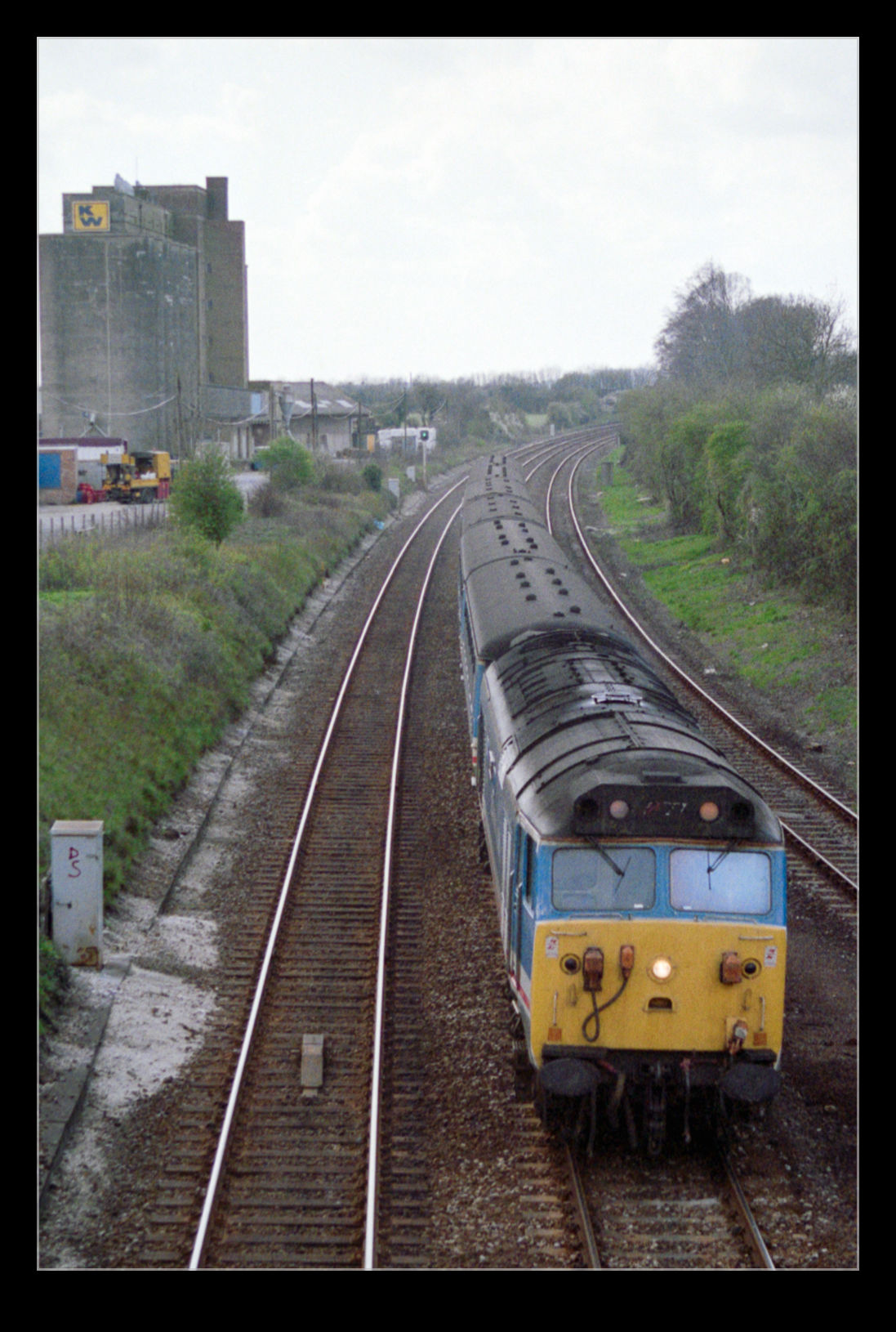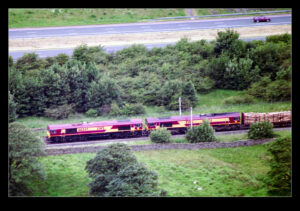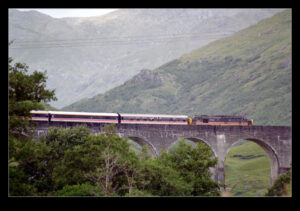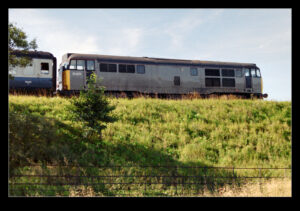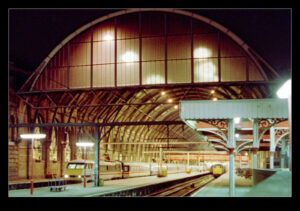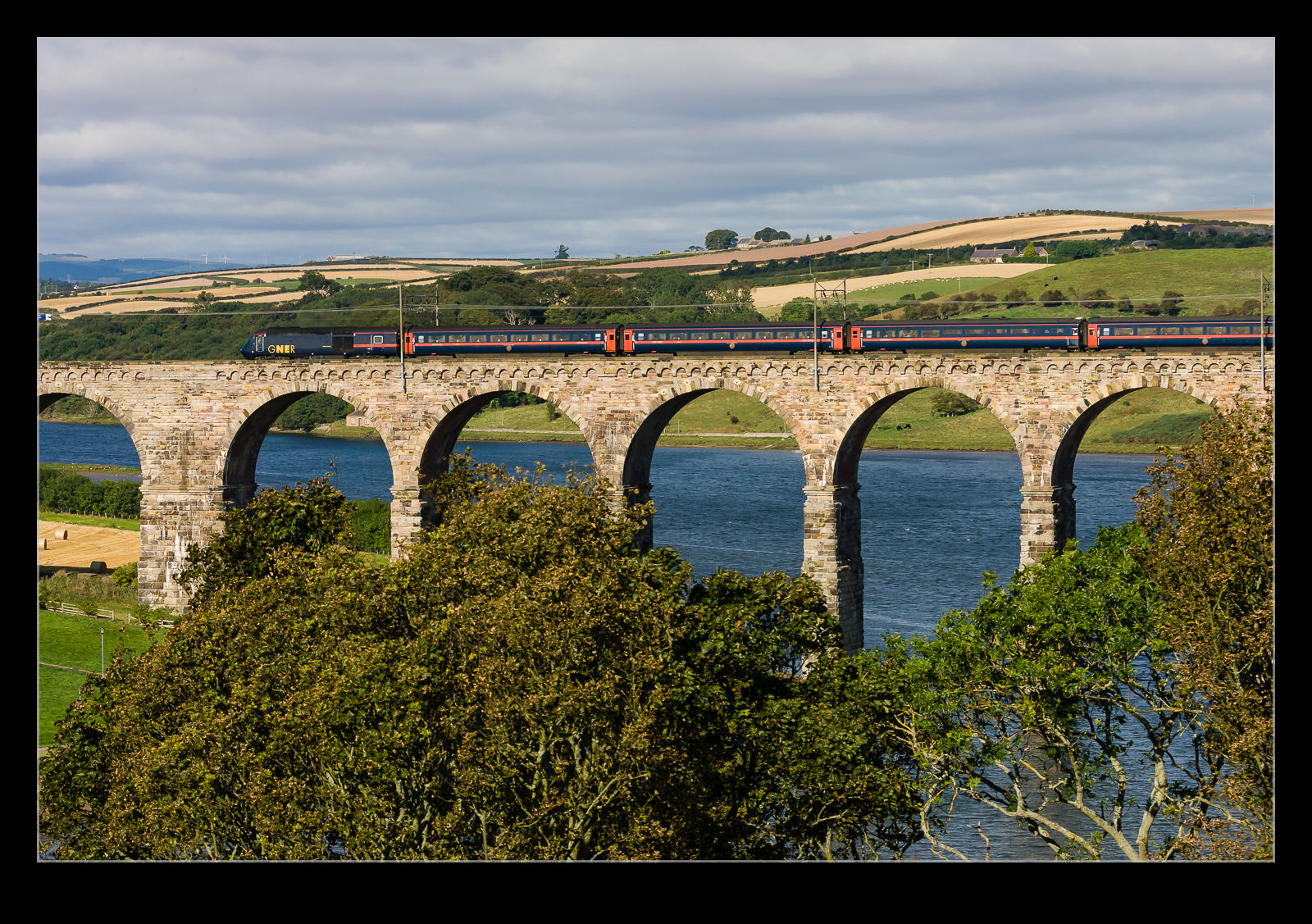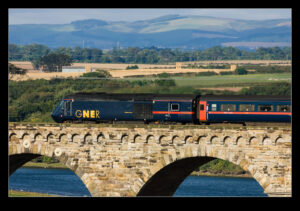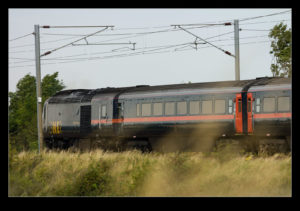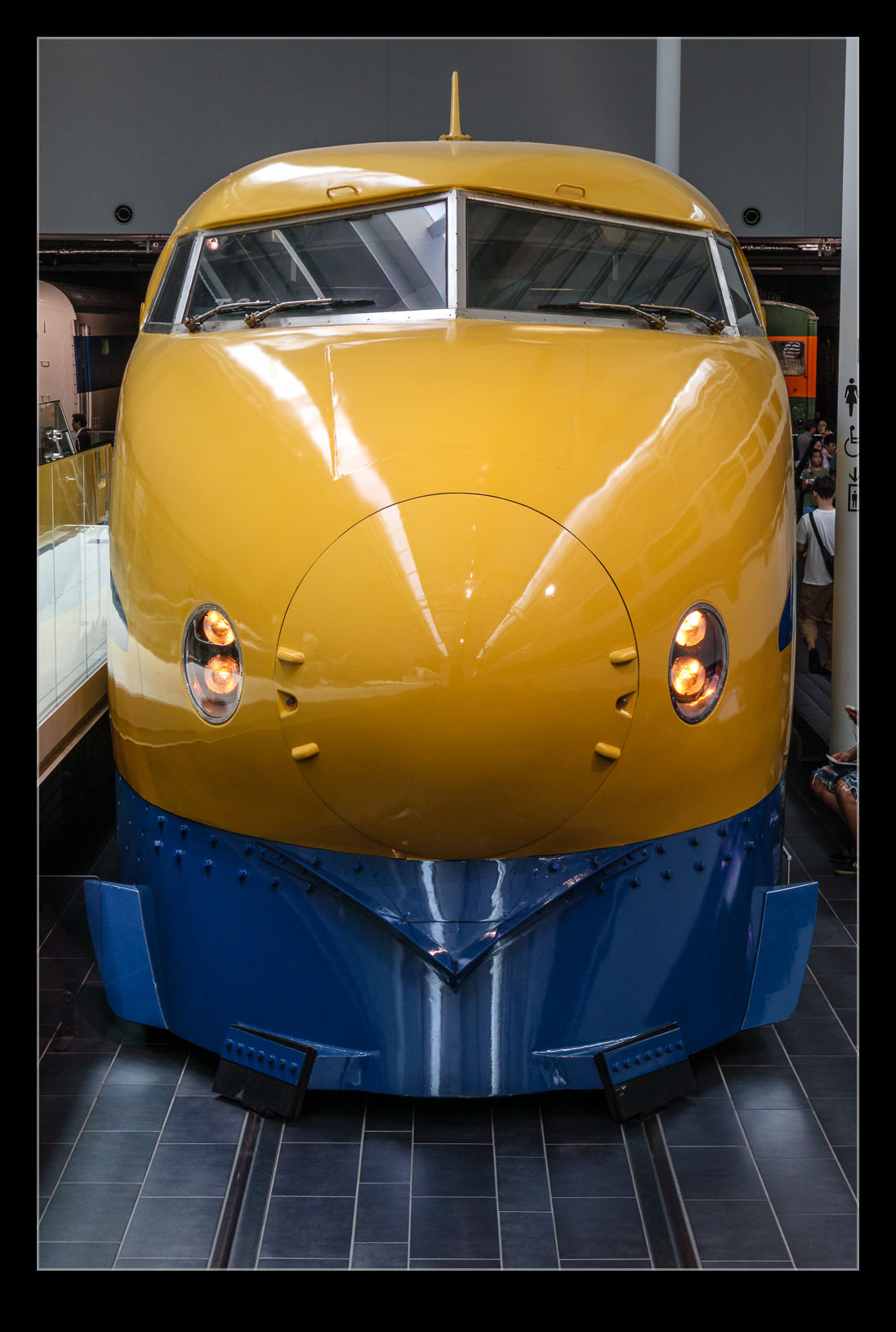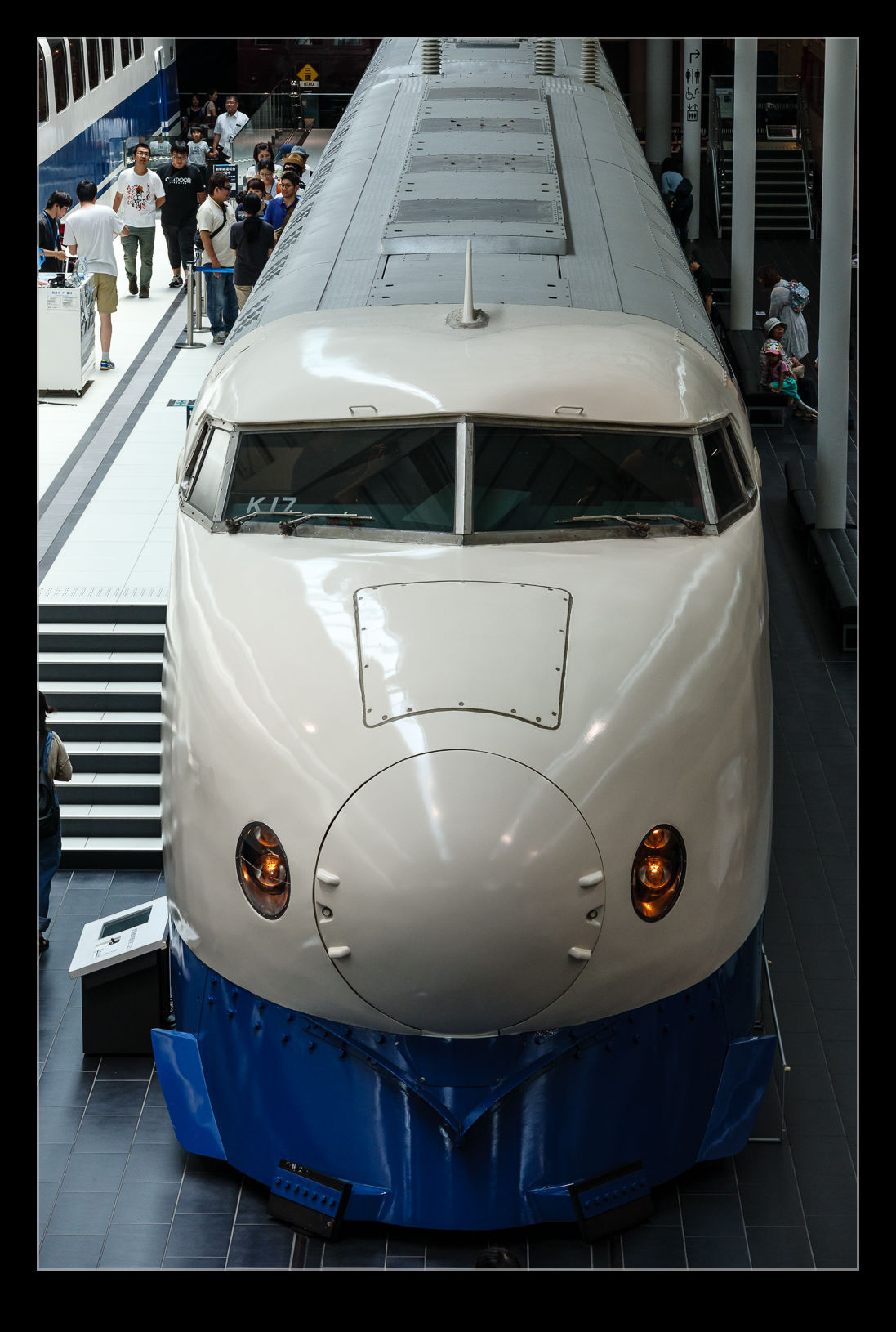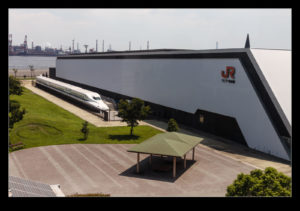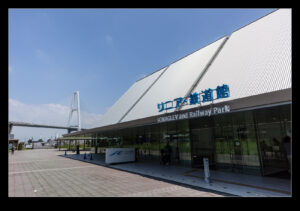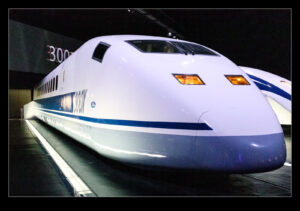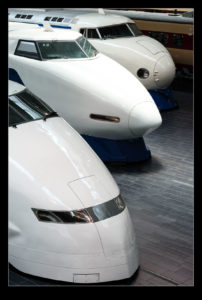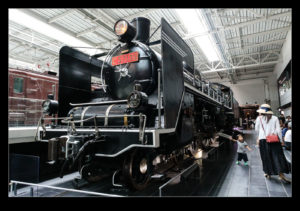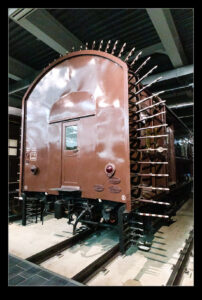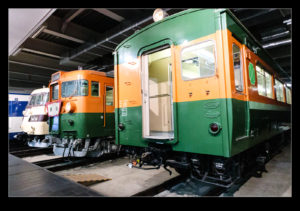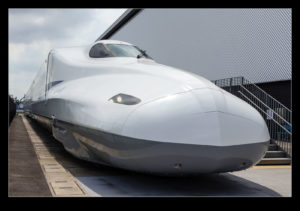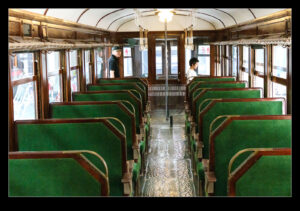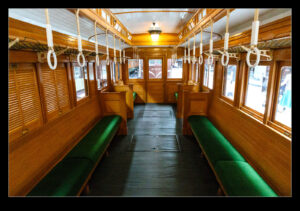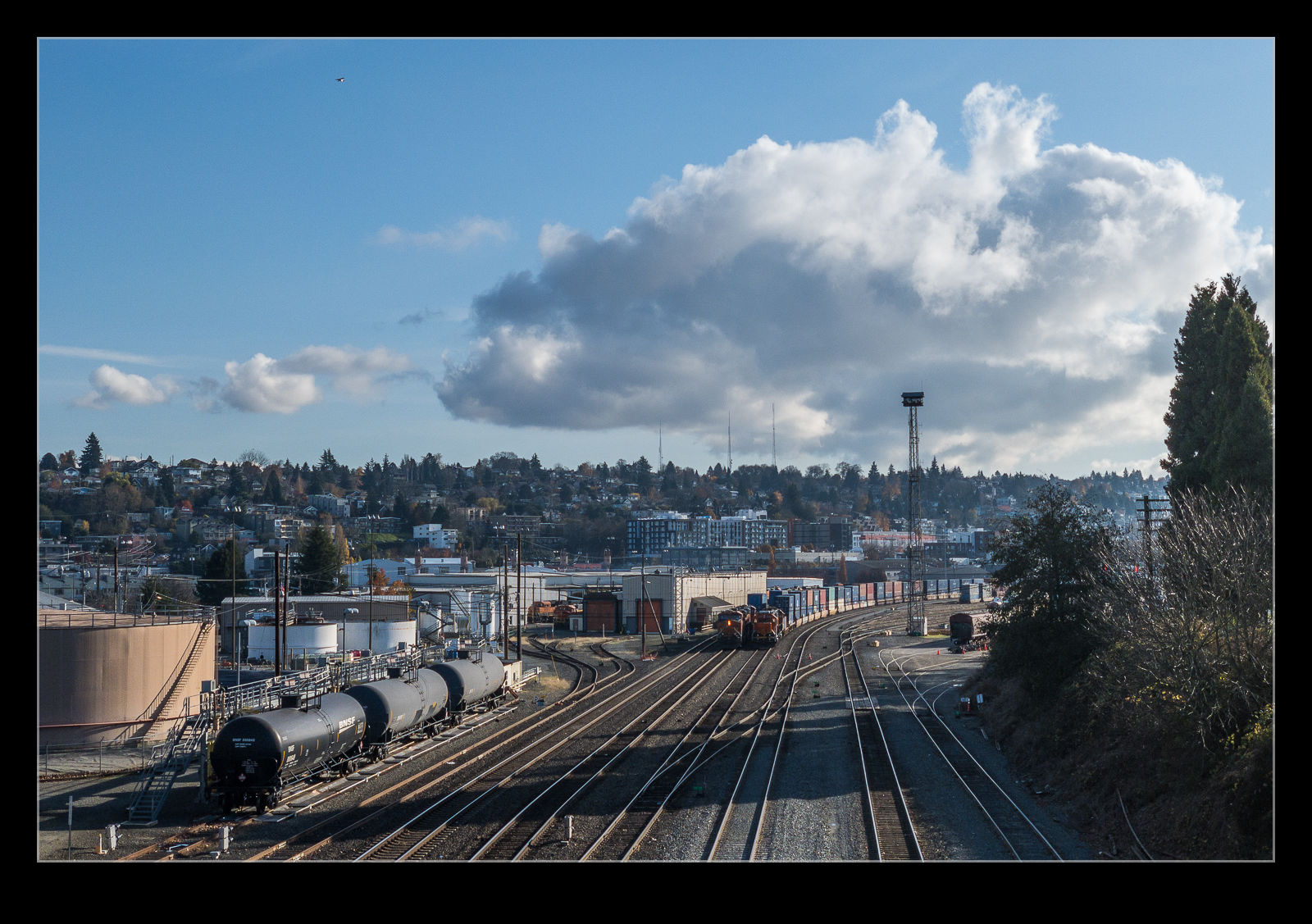 BNSF has a large maintenance yard in Seattle in the Interbay area. My bike ride took me past the yard and then up and over the tracks. On my return leg, I stopped to have a look at the facility. There is a space where a round house used to be which you can see on Google Maps. A couple of trains were on the lines and there were a bunch of locos elsewhere in the yard.
BNSF has a large maintenance yard in Seattle in the Interbay area. My bike ride took me past the yard and then up and over the tracks. On my return leg, I stopped to have a look at the facility. There is a space where a round house used to be which you can see on Google Maps. A couple of trains were on the lines and there were a bunch of locos elsewhere in the yard.
Tag Archives: train
BNSF Along the Shore
Vintage Japanese Rolling Stock
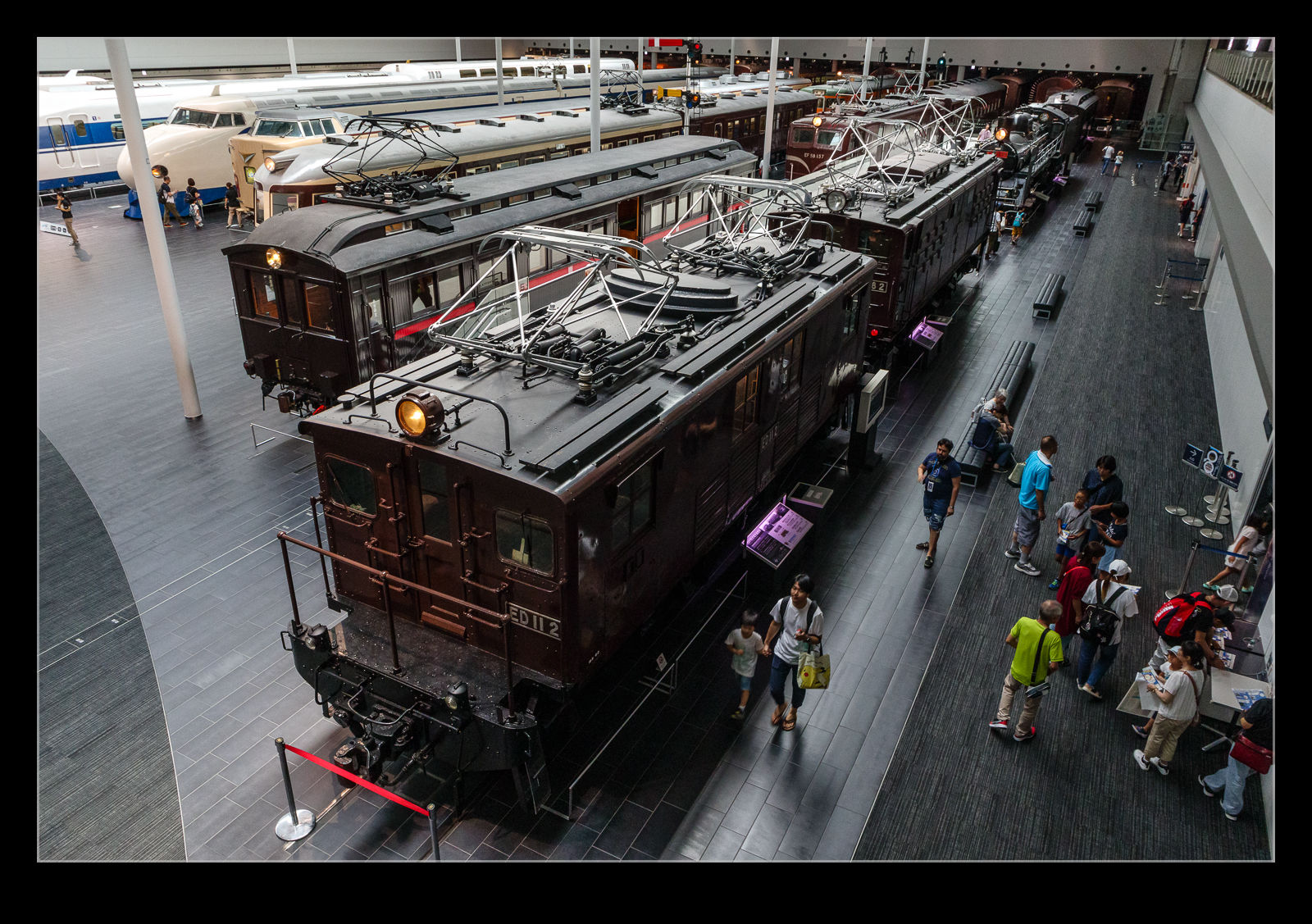 Here are some old Japanese rail vehicles. These are part of the SCMaglev museum in Nagoya that I visited when I was in Japan last summer. The museum has a great selection of Shinkansen equipment across the generations but it also has a lot of other rail vehicles from long ago. The vehicles clearly look old from the outside but the interiors are really an interesting comparison with what you see these days. The amount of wood in the paneling and the materials of the seating are definitely of their time. I was quite amused by the fans mounted on the ceiling. Obviously pre-air conditioning days with these cars and so a bit of air circulation was all you could hope for. Knowing how incredibly hot it gets in Japan during the summer, they would not have done much for the riders I would have thought. I wonder whether it was as crowded in those days as it is now. If it was even close, that would have been brutal.
Here are some old Japanese rail vehicles. These are part of the SCMaglev museum in Nagoya that I visited when I was in Japan last summer. The museum has a great selection of Shinkansen equipment across the generations but it also has a lot of other rail vehicles from long ago. The vehicles clearly look old from the outside but the interiors are really an interesting comparison with what you see these days. The amount of wood in the paneling and the materials of the seating are definitely of their time. I was quite amused by the fans mounted on the ceiling. Obviously pre-air conditioning days with these cars and so a bit of air circulation was all you could hope for. Knowing how incredibly hot it gets in Japan during the summer, they would not have done much for the riders I would have thought. I wonder whether it was as crowded in those days as it is now. If it was even close, that would have been brutal.
An Update to the Japanese Rail Photos
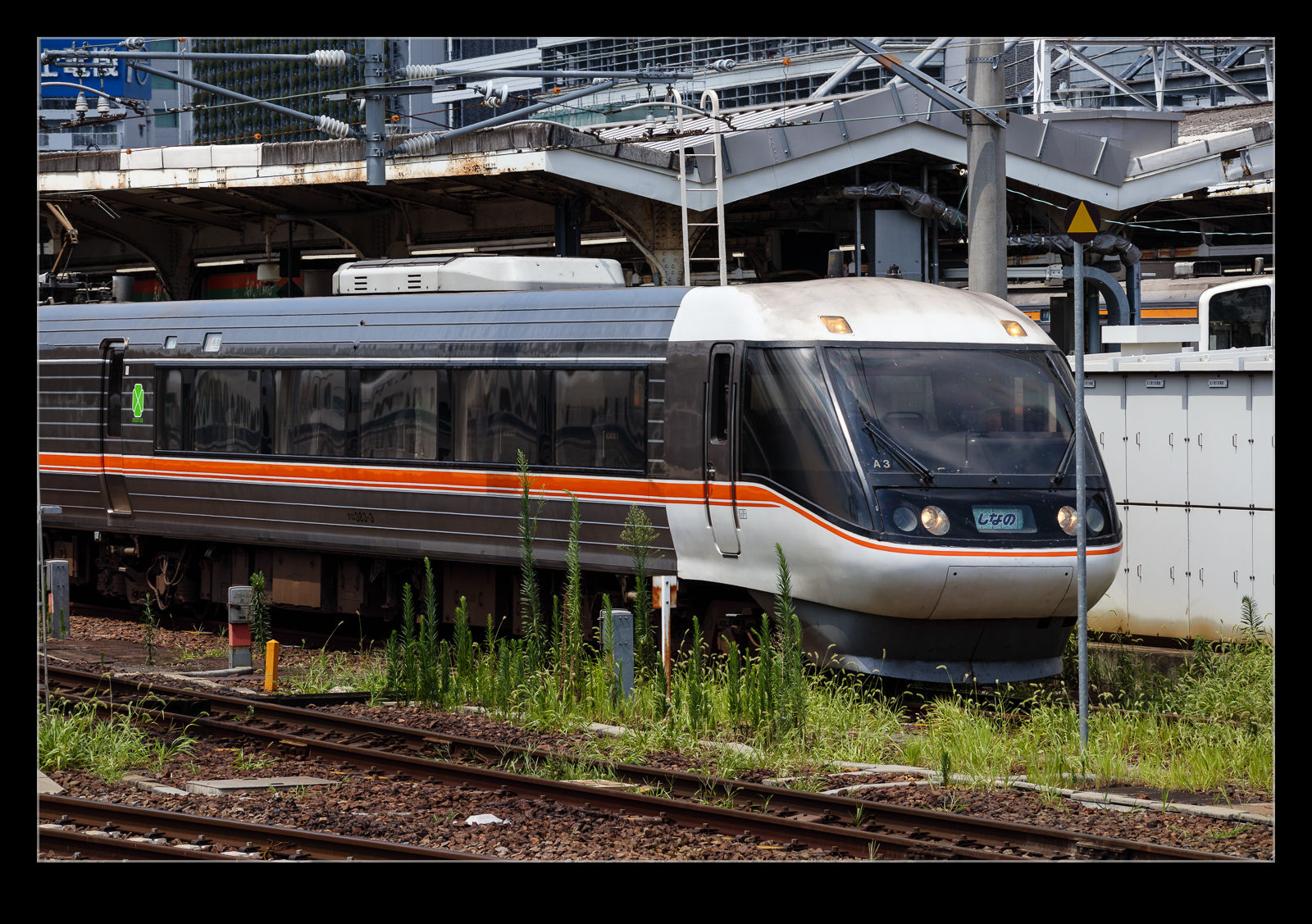 I have put some previous posts together of Japanese trains from my travels. This is an update to that (although a very late update given that these were taken nearly a year ago!). I got to see some different trains while I was in Nagoya for the day and then there is the variety of trains that you get around the Tokyo area. There was also a small line that ran through the Kamakura area which we crossed paths with as we were walking to the beach from the giant Buddha statue that I wrote about in this post. A few more photos to amuse those of you that like different trains.
I have put some previous posts together of Japanese trains from my travels. This is an update to that (although a very late update given that these were taken nearly a year ago!). I got to see some different trains while I was in Nagoya for the day and then there is the variety of trains that you get around the Tokyo area. There was also a small line that ran through the Kamakura area which we crossed paths with as we were walking to the beach from the giant Buddha statue that I wrote about in this post. A few more photos to amuse those of you that like different trains.
Old British Locomotives
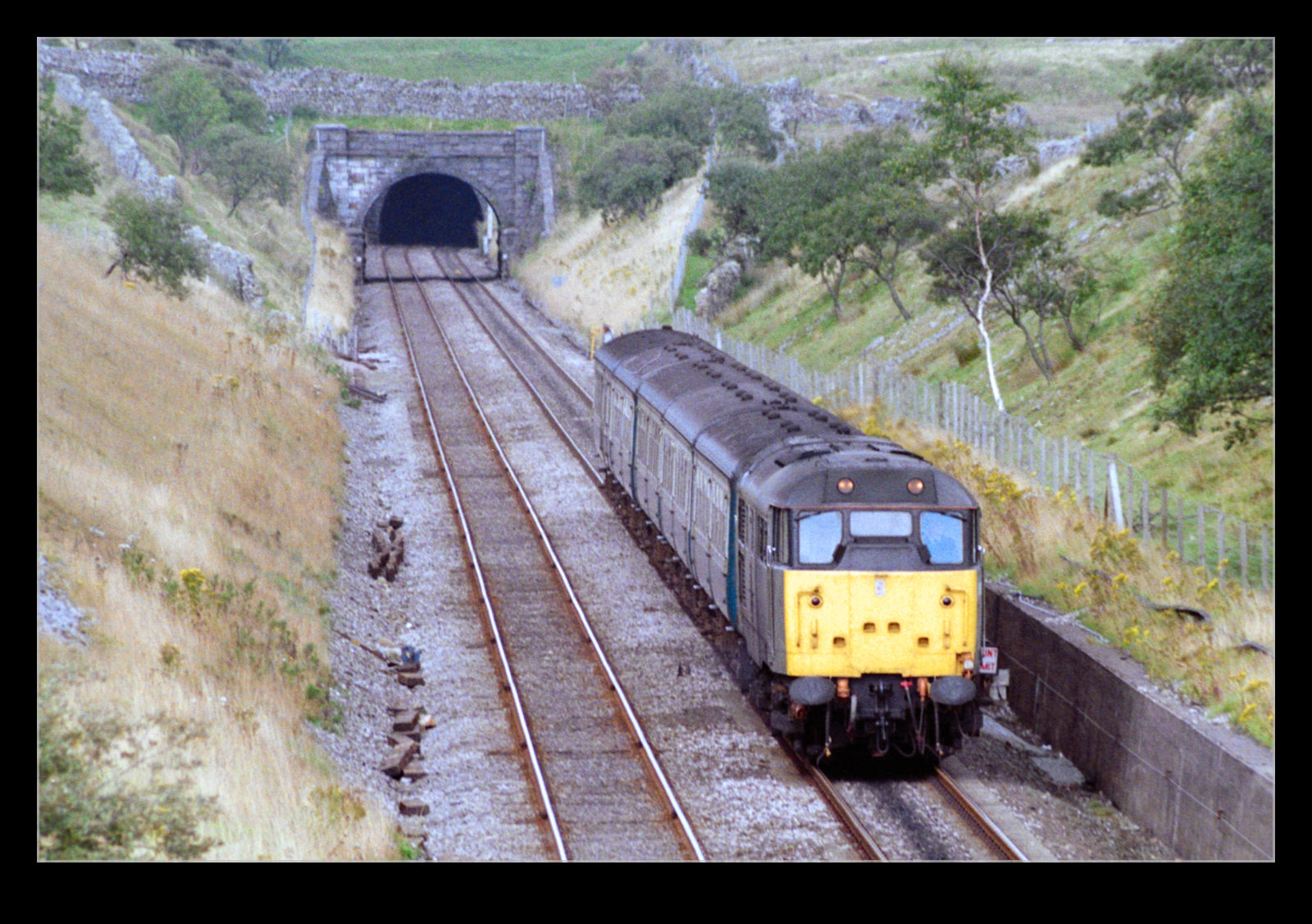 In the process of scanning so many old negatives, I come across shots that I had no idea I had taken. When I still shot film, I would not go nuts taking shots but I was certainly willing to take a shot of anything that I found interesting at the time. Since I had no idea that I was going to have a career in rail, I didn’t think trains would be very important. However, I am an engineer at heart and any big mechanical items catch my interest. It isn’t surprising that I found a few photos of trains. Some of my old colleagues will find these of interest. Others may just like them because they like trains. My sister will probably like the Class 50 just because she used to commute to work behind them for a number of years!
In the process of scanning so many old negatives, I come across shots that I had no idea I had taken. When I still shot film, I would not go nuts taking shots but I was certainly willing to take a shot of anything that I found interesting at the time. Since I had no idea that I was going to have a career in rail, I didn’t think trains would be very important. However, I am an engineer at heart and any big mechanical items catch my interest. It isn’t surprising that I found a few photos of trains. Some of my old colleagues will find these of interest. Others may just like them because they like trains. My sister will probably like the Class 50 just because she used to commute to work behind them for a number of years!
Looking Back at the HSTs
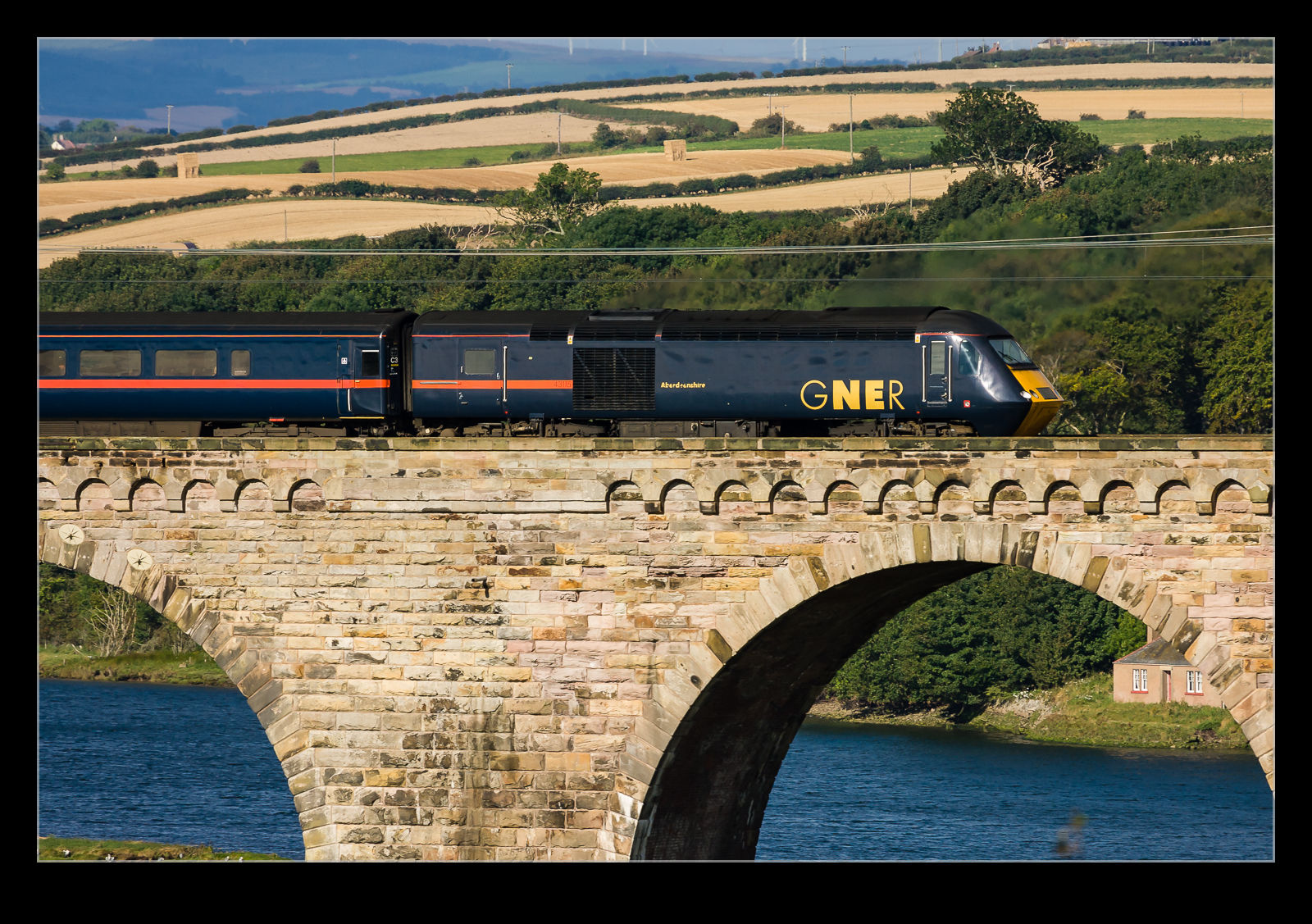 As a small boy, the new thing in British trains was the Intercity 125. Known in the industry as the HST, this was a step forward in fast train travel for the UK. When I started working in the rail industry many years later, the HSTs were a big part of our fleet. They had been in service a long time by then but were still the backbone of certain corridors and were getting further investment. Move on another 20 years and now the fleet is finally disappearing.
As a small boy, the new thing in British trains was the Intercity 125. Known in the industry as the HST, this was a step forward in fast train travel for the UK. When I started working in the rail industry many years later, the HSTs were a big part of our fleet. They had been in service a long time by then but were still the backbone of certain corridors and were getting further investment. Move on another 20 years and now the fleet is finally disappearing.
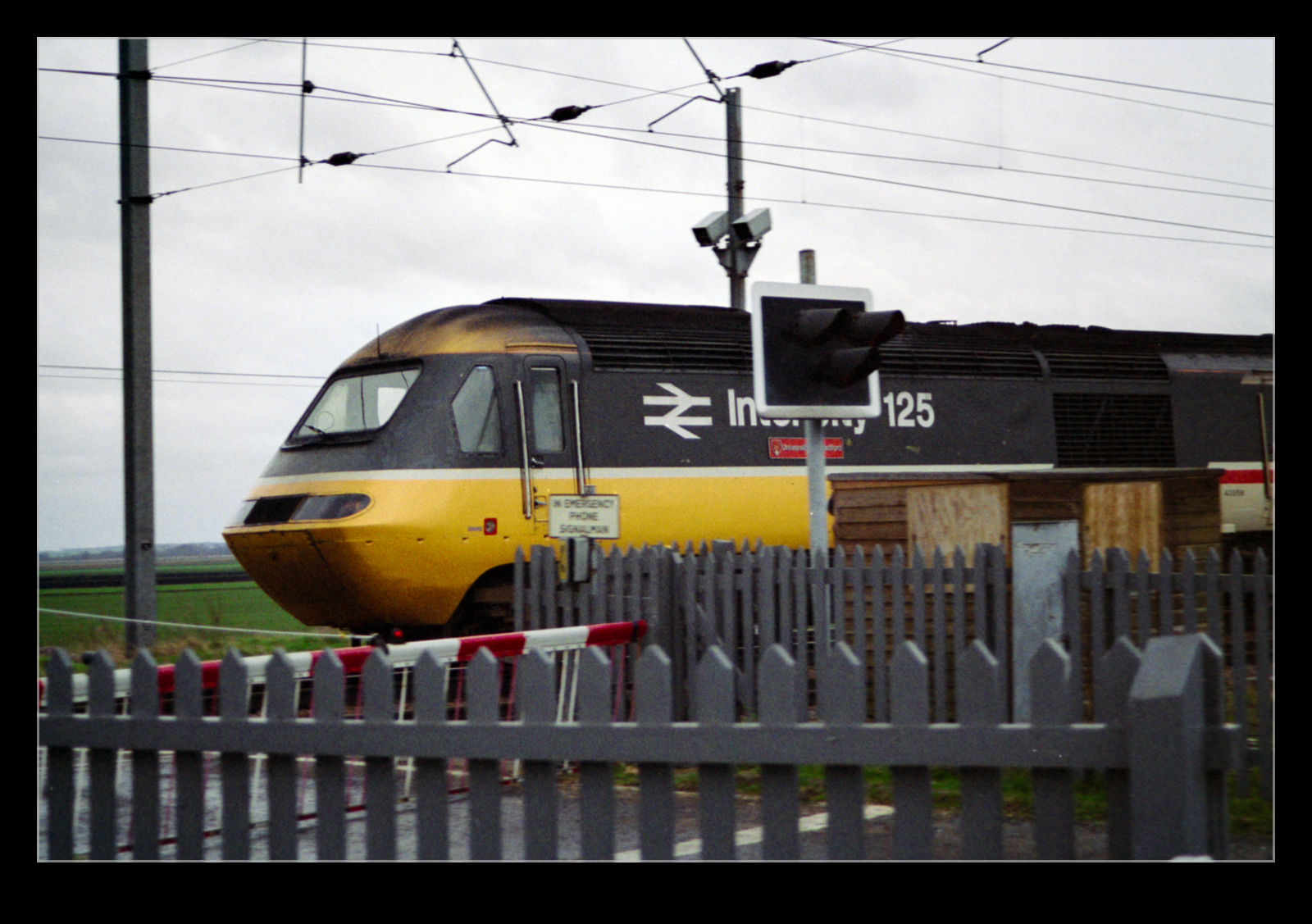 Some are still being reconfigured for a future on new routes, but the majority of the fleet is being replaced by a new generation of trains and it is a surprise just how long it has taken to find their successors. The HSTs have been a solid fleet with strong performance, a level of redundancy and a ride quality that was impressive. I figured I would through in a couple of shots I have of them. I have very few, sadly. One is an old one in British Rail colors from the 80s and the others are from the days of GNER. What a shame I don’t have more. Given the amount of time I spent traveling on them or inspecting them at depots and overhaul facilities, I should have tons. Oh to have had had phones in our cameras then!
Some are still being reconfigured for a future on new routes, but the majority of the fleet is being replaced by a new generation of trains and it is a surprise just how long it has taken to find their successors. The HSTs have been a solid fleet with strong performance, a level of redundancy and a ride quality that was impressive. I figured I would through in a couple of shots I have of them. I have very few, sadly. One is an old one in British Rail colors from the 80s and the others are from the days of GNER. What a shame I don’t have more. Given the amount of time I spent traveling on them or inspecting them at depots and overhaul facilities, I should have tons. Oh to have had had phones in our cameras then!
Tokyo Station – Home of Different Shinkansen Fleets
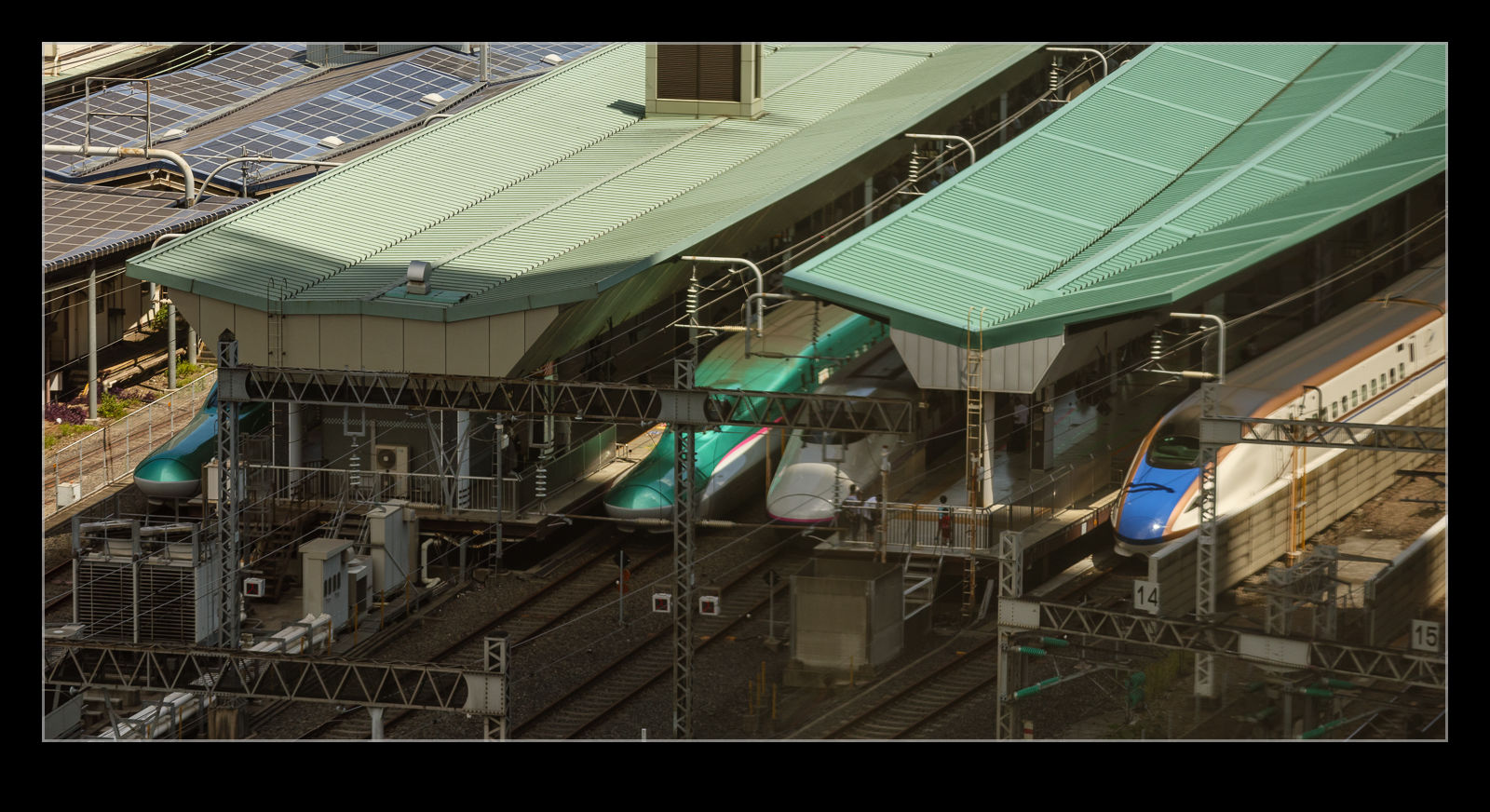 I have posted a variety of pictures of the Tokaido Shinkansen system from my visits to Japan. Tokyo Station is the end of the line for JR Central. However, it isn’t the only Shinkansen service from this station. JR East Shinkansen services also serve the station. They head north out of the station while JRC heads south. The lines are not connected so this is a terminus for both companies. However, when you look down on the station, you can see both operators. I took these pictures from our office window looking down on the station and you can see a variety of Shinkansen equipment on the JR East Platforms as well as a JRC train passing underneath.
I have posted a variety of pictures of the Tokaido Shinkansen system from my visits to Japan. Tokyo Station is the end of the line for JR Central. However, it isn’t the only Shinkansen service from this station. JR East Shinkansen services also serve the station. They head north out of the station while JRC heads south. The lines are not connected so this is a terminus for both companies. However, when you look down on the station, you can see both operators. I took these pictures from our office window looking down on the station and you can see a variety of Shinkansen equipment on the JR East Platforms as well as a JRC train passing underneath.
The Original Doctor Yellow
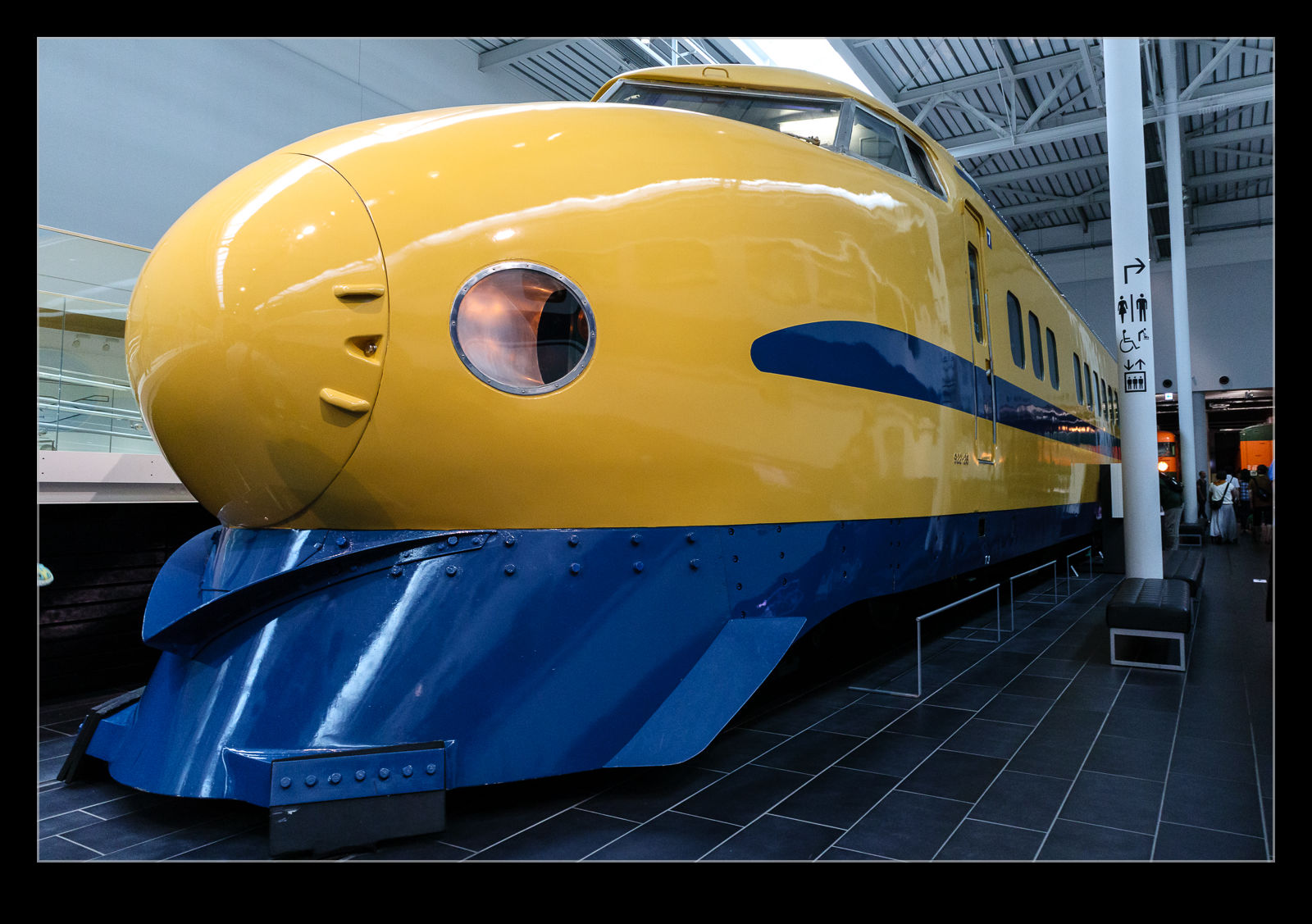 The Tokaido Shinkansen service requires regular inspection of the track to ensure it is up to the high standards required of high speed service. JRC operates an inspection train called Doctor Yellow. It is a highly instrumented version of the current trains. I have seen the current Doctor Yellow when I was at one of JRC’s maintenance facilities. However, the original Doctor Yellow was based on the Series 0 trains. It is now preserved in the SC Maglev museum in Nagoya along with many of the other Shinkansen designs.
The Tokaido Shinkansen service requires regular inspection of the track to ensure it is up to the high standards required of high speed service. JRC operates an inspection train called Doctor Yellow. It is a highly instrumented version of the current trains. I have seen the current Doctor Yellow when I was at one of JRC’s maintenance facilities. However, the original Doctor Yellow was based on the Series 0 trains. It is now preserved in the SC Maglev museum in Nagoya along with many of the other Shinkansen designs.
The Train That Started It All
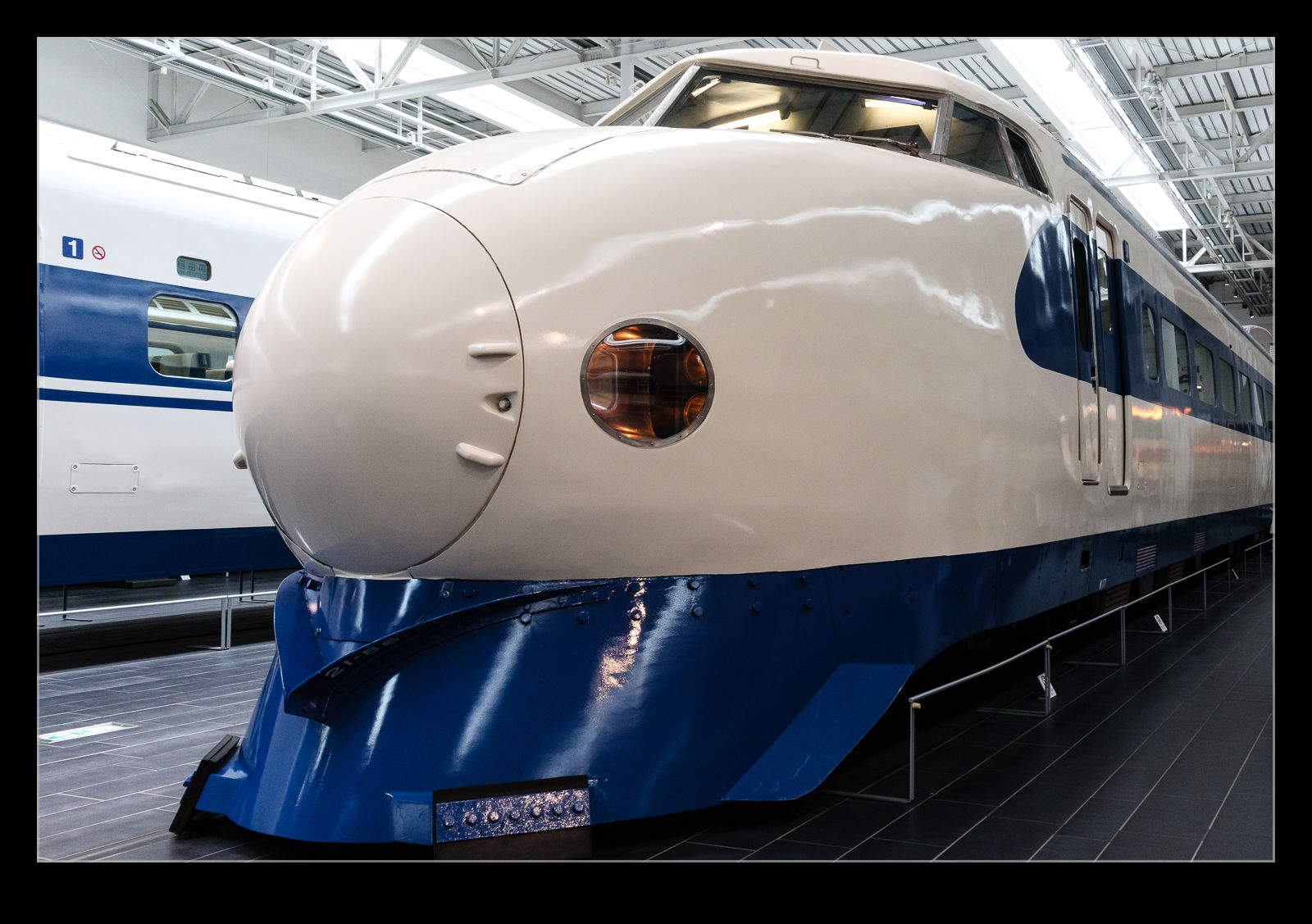 The Japanese Shinkansen trains introduced in the 1960s became known around the world as bullet trains. The shape of them was well known, often photographed with Mt Fuji in the background. While other countries developed high speed rail, the Japanese bullet train was often the first one people would associate with the topic. These first trains are known as the Series 0. There have been several iterations of design since. However, the Series 0 is still very recognizable to me and probably others of my generation.
The Japanese Shinkansen trains introduced in the 1960s became known around the world as bullet trains. The shape of them was well known, often photographed with Mt Fuji in the background. While other countries developed high speed rail, the Japanese bullet train was often the first one people would associate with the topic. These first trains are known as the Series 0. There have been several iterations of design since. However, the Series 0 is still very recognizable to me and probably others of my generation.
 I had seen a Series 0 vehicle once before. I visited the Nippon Sharyo factory is Toyokawa many years ago and they have a cab vehicle on display by the main gate. Sadly, I wasn’t able to get a photograph of that then. Seeing an example at the SC Maglev museum was my second opportunity. It was displayed alongside a number of the more recent iterations of the Shinkansen but, judging by the number of people taking photos of it, it still has a strong level of recognition.
I had seen a Series 0 vehicle once before. I visited the Nippon Sharyo factory is Toyokawa many years ago and they have a cab vehicle on display by the main gate. Sadly, I wasn’t able to get a photograph of that then. Seeing an example at the SC Maglev museum was my second opportunity. It was displayed alongside a number of the more recent iterations of the Shinkansen but, judging by the number of people taking photos of it, it still has a strong level of recognition.
SC Maglev Museum
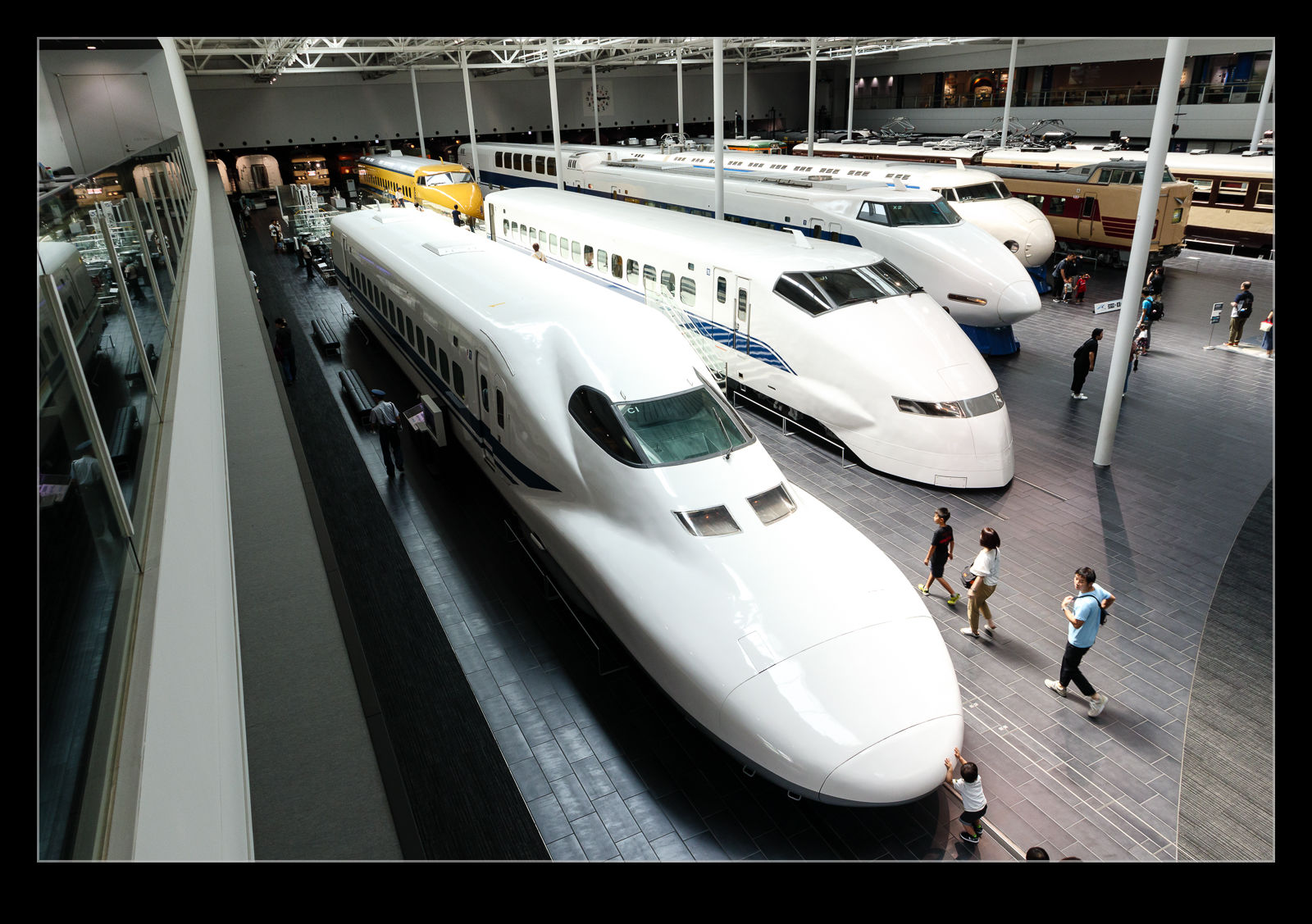 Nagoya is home to a museum of Japanese rolling stock. The museum name focuses on Maglev technology and there is a Maglev prototype in the museum. However, the exhibits are really a cross section of the Japanese rail industry over the years. I will probably post some more from the museum as there were quite a few interesting exhibits. Most of it was inside – most welcome on such a hot day – but the N700 prototype was outside. I did have a look at that briefly along with an old steam locomotive but I was soon driven back inside by the temperatures.
Nagoya is home to a museum of Japanese rolling stock. The museum name focuses on Maglev technology and there is a Maglev prototype in the museum. However, the exhibits are really a cross section of the Japanese rail industry over the years. I will probably post some more from the museum as there were quite a few interesting exhibits. Most of it was inside – most welcome on such a hot day – but the N700 prototype was outside. I did have a look at that briefly along with an old steam locomotive but I was soon driven back inside by the temperatures.
 When I first got there, you are directed into a hall with three significant exhibits. It was so dark, I was wondering whether there would be any decent photo opportunities. However, this was just the initial introduction and there were periodic videos and light shows to allow you to see these exhibits more clearly. A little patience was required. The main hall had the majority of the exhibits and they were lit normally. There were plenty of people in the museum taking pictures with small children that didn’t seem to be enjoying it as much as the parents would have liked! Maybe they wanted to be at Legoland across the street?
When I first got there, you are directed into a hall with three significant exhibits. It was so dark, I was wondering whether there would be any decent photo opportunities. However, this was just the initial introduction and there were periodic videos and light shows to allow you to see these exhibits more clearly. A little patience was required. The main hall had the majority of the exhibits and they were lit normally. There were plenty of people in the museum taking pictures with small children that didn’t seem to be enjoying it as much as the parents would have liked! Maybe they wanted to be at Legoland across the street?
